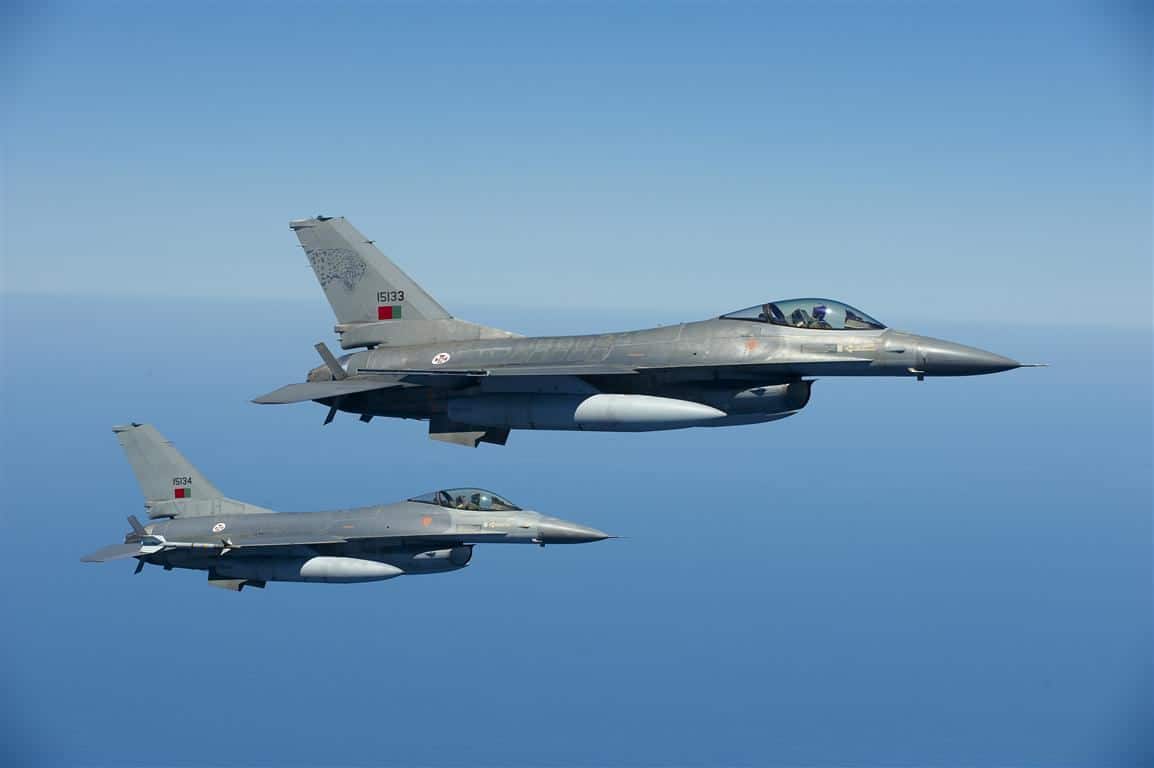Two planes were forced to make emergency landings in Portugal in the space of less than 24-hours: one in Beja on Sunday, the other in Faro on Monday. And while the Boeing 737 that chose to come down in Faro was packed with passengers, the real drama played out over Lisbon and the Alentejo as the pilots of an Embraer E190 passenger jet suffered a “critical failure of navigation and flight control systems”.
The first panicked communication to the control tower in Lisbon was: “Mayday, Mayday, Mayday. We have lost control…”
An aviation enthusiast tracking flight KC1388 tweeted: “Whoever is at the controls of #KC1388 right now is doing some incredible and completely insane s**t. Hope they know what they’re doing and can land safely”.
The truth is pilots didn’t. Everything had gone haywire.
Aeronautical engineers have since concluded that the plane was subjected to such a high-level of G-force that it will be “difficult to return to flying without total repair”, wrote tabloid Correio da Manhã on Wednesday.
At one point, the plane was 1200 metres up “with its nose pointing down, at an angle of 90º to the land below. The situation was so extreme that the alarms went off…”
An image of the plane’s trajectory shows a terrifying course of repeated tight turns and sudden descents as the airspeed and altitude varied wildly.
At one point airspeed fell to 120 mph and the plane was “at a high risk of stalling”.
“As normal air traffic continued to fly in and out of Lisbon, the plane flew a bizarre course northeast of the Portuguese capital, with its altitude varying from 6,000 to 17,000 feet”, wrote the UK Independent – just one of many international sources that reported on this drama.
To make matters worse, the weather over Lisbon was horrendous, giving the traumatised pilots “few visual clues”.
It was at this point that F16 fighter jets were scrambled from Montijo airbase: pilots there had just finished lunch and were “preparing to watch a film”. Within 12 minutes they were in the air. Six minutes later, using supersonic speed, they were alongside the Embraer – and then, quite literally, they appear to have made all the difference.
Up to this point, the Embraer pilots were thinking solely of landing on water. Their constant requests to the control tower in Lisbon were for directions to the sea.
“They were lost in the middle of the clouds with compromised controls in a traumatic situation”, F16 lieutenant colonel Nuno Monteiro da Silva has since explained.
Lt Col Monteiro da Silva was in one of the ‘rescuing F16s’. “I have 2500 hours of flying. I have been on missions to Afghanistan but I have never experienced such drama”, he told reporters. “It was one of those situations where Our Lady of the Skies took over…”
Wrote tabloid Correio da Manhã, the moment the F16s established visual contact and direct communication with the pilots of the Embraer, the Air Force pilots realised flight deck crew were under massive stress “low on ideas, spatially disoriented and without control of the aircraft”.
The idea to land on water was designed to minimize damage to third parties, which in Lt Col Monteiro da Silva’s opinion was “altruistic, though unlikely to be successful”.
“We managed to calm them down and steer them towards an area with better visibility”, he told CM. “Then it was simply a matter of getting enough control of the plane to line it up with a runway” in Beja.
No mean feat, as it turned out. The plane tried twice before the exhausted captain handed over controls to his co-pilot for a third attempt. Even that ‘missed’ the designated ‘pista 19R’ but came down a few metres to the side, on pista 19L.
“On the ground… thanks to God!” Lt Col Monteiro da Silva can be heard exclaiming twice on a recording now on Youtube, as the shaken crew – four engineers as well as the captain and co-pilot – came to the end of their terrifying two hour and six minute ordeal.
Air Astana’s president Peter Foster has since told CM that “on the basis of available facts, we can say the incident was the result of maintenance work performed on the plane by OGMA”, the aerospace company, based at an airbase in Alverca – just outside Lisbon – jointly owned by Embraer and the Portuguese State (65% Embraer, 35% Portugal).
OGMA has not commented, but confirms that it is collaborating with aeronautical authorities investigating the incident.
The five year old E190 plane is now being minutely examined in Beja, while the two pilots had to be treated briefly in hospital: one for “high blood pressure and anxiety”, the other – purportedly a 54-year-old Brit – for injuries sustained during the unplanned acrobatics.
Air Astana – the flag carrier of the Republic of Kazakhstan – is a joint venture between the republic’s sovereign wealth fund and British-multinational defence, security and aerospace company BAE systems.
EMERGENCY LANDING NUMBER TWO
Almost before returning F16 pilots could tell their tale of drama and success back in Montijo another alert went out: a Boeing 737 passenger jet flying from Funchal in Madeira en-route for Amsterdam had developed cabin pressurising issues and was requesting an emergency landing in Faro, Algarve.
Again, two fighter jets blasted off on another potentially complicated mission. This time to discover, to everyone’s relief, that the Boeing flying for Transavia Airlines was able to make a text-book landing.
And so came the end of 24-hours of pure tension. Minister of Defence João Gomes Cravinho has praised the speed and performance of Montijo’s F16s – telling reporters that two further planes had been on standby, as well as the Navy, had the Air Astana landing actually taken place on water.
Two options had been briefly considered, the Tejo river and the sea. The first was complicated by the fact that the United States massive aircraft carrier, the USS Harry S. Truman, was taking a four-day rest following NATO manoeuvres in Norway “in the ideal location” for a possible landing.
natasha.donn@algarveresident.com


























